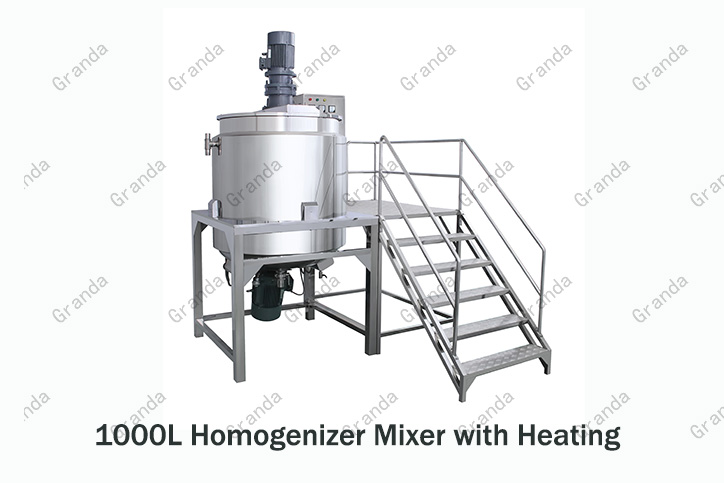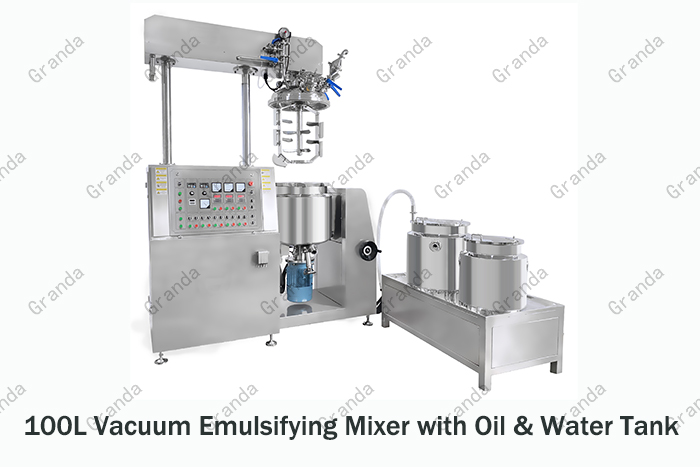In the production and preparation process of acrylic resin coatings, the selection of stirring pots should be based on material characteristics (such as viscosity, containing solvents/pigments, etc.) and process requirements (such as mixing, dispersing, dissolving, defoaming, etc.). The core requirements are efficient mixing, uniform dispersion, anti-volatilization, and corrosion resistance. The following is a detailed description of specific type selection and functional requirements:
I. Suitable Types of Stirring Pots
Acrylic resin coatings usually contain components such as acrylic resin, organic solvents, pigments, and additives. Among them, solvents are volatile, and some components are weakly corrosive. Therefore, the stirring pot must be corrosion-resistant and have strong sealing performance. The mainstream type is:
- Stainless Steel Multifunctional Stirring Tank (or Reactor)
It is mostly made of 304 or 316 stainless steel (316 has stronger corrosion resistance, suitable for scenarios containing strong solvents or acidic additives). The pot body is of a closed design, which can integrate functions such as stirring, heating, and dispersing, and is suitable for mixing needs from low-viscosity resin solutions to high-viscosity pigment pastes.
II. Core Functional Requirements
1. Stirring and Dispersing Functions (Essential)
- Stirring Function: It is necessary to achieve uniform mixing of materials. An adjustable speed stirring system (usually with a speed range of 50-1500rpm) is required, and different stirring paddles should be matched according to the stage requirements:
- For the low-viscosity mixing stage (such as premixing resin and solvent): paddle-type or propeller-type stirring paddles are used to realize the cyclic mixing of the overall materials;
- For the high-viscosity or pigment-containing stage (such as pigment dispersion): anchor-type or ribbon-type stirring paddles (suitable for high viscosity) + high-speed dispersion discs (with a speed of 800-1500rpm) are used. The dispersion disc breaks the pigment agglomeration through high-speed shearing force to ensure uniform particle size (the fineness of the coating directly affects the appearance and performance).
- Dispersing Priority: Higher than ordinary stirring, because the dispersion effect of pigments in acrylic resin coatings is crucial (such as titanium dioxide, color pastes, etc. need to be dispersed to the micron level), otherwise, particles and color differences will appear in the coating film.
2. Heating Function (Commonly Used)
- Function: Acrylic resin has high viscosity at low temperatures. Heating can reduce the viscosity (facilitating mixing), promote the dissolution of additives (such as leveling agents, defoamers), and accelerate the mutual dissolution of solvents and resins.
- Heating Method: Jacket heating (electric heating or steam heating) is mostly used, and the temperature is controllable (usually 50-100°C, specifically adjusted according to the type of resin to avoid excessive volatilization of solvents).
3. Sealing and Anti-volatilization Functions (Essential)
Acrylic resin coatings often use organic solvents (such as toluene, ethyl ester), which are volatile and irritating. Therefore, the stirring pot must have good sealing performance:
- The pot body and the pot cover adopt mechanical seals or magnetic seals (to avoid shaft seal leakage);
- A controllable feeding port (such as a liquid feeding pipe, a solid feeding valve) is reserved to reduce open operation.
4. Vacuum Defoaming Function (Recommended)
If bubbles remain in the coating, it will cause defects such as pinholes and shrinkage cavities in the coating film. The vacuum defoaming function can remove bubbles in the materials by vacuumizing (the vacuum degree is usually -0.06~-0.09MPa), which is especially suitable for high-viscosity or thick-paste acrylic coatings.
5. Cooling Function (Equipped as Needed)
If it is necessary to cool down quickly after heating (to avoid resin oxidation and excessive solvent volatilization caused by high temperature), a cooling system (passing cooling water) can be integrated into the jacket to realize continuous heating and cooling operations.
6. Homogenization Function (Optional, Depending on Pigment Fineness Requirements)
For coatings with extremely high requirements (such as high-gloss topcoats), it is necessary to further refine the pigment particle size (such as nano-scale dispersion). A homogenization component (such as a colloid mill, high-pressure homogenizing head) can be matched to achieve material homogenization through strong shearing and impact (usually used in conjunction with high-speed dispersion).



Summary
The stirring pot for acrylic resin coatings is mainly stainless steel multifunctional stirring tank. The core functions must include: adjustable speed stirring (including dispersion disc), heating, sealing and anti-volatilization; vacuum defoaming, cooling or homogenization functions can be added according to requirements to ensure uniform mixing, no bubbles, and stable performance of the coating.